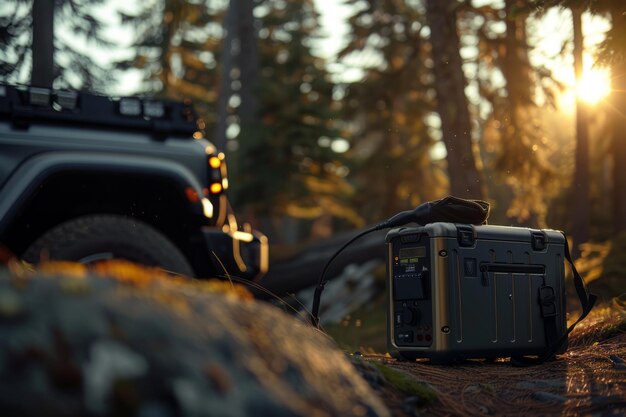Selecting the Right Generator: Powering Your Well Pump and Refrigerator
When the lights go out, keeping essential appliances like a well pump and refrigerator running can be crucial. These appliances ensure access to water and preserve food, making them top priorities during a power outage. But what size generator do you need to keep these appliances running smoothly? This guide will walk you through everything you need to know to select a generator that fits your needs.
Understanding the Power Needs of Your Appliances
Before diving into generator options, it's important to understand how much power your well pump and refrigerator require. This will be key in determining the generator size.
Calculating Power Requirements
Well Pump: The power requirement for well pumps varies depending on their size and type. Smaller residential pumps may need only a few hundred watts, while larger, deep-well pumps might require up to several thousand watts. It's crucial to know your pump’s specifications.
Refrigerator: Most standard refrigerators require between 800 to 1,200 watts of power, but energy-efficient models might use less. Start-up watts can be higher, sometimes up to two or three times the running wattage.
Summary Table: Average Power Requirements
| Appliance | Running Watts | Starting Watts |
|---|---|---|
| Well Pump | 500 to 3,000 | 1,000 to 4,500 |
| Refrigerator | 800 to 1,200 | 2,000 to 3,600 |
Consider Combined Power Usage
To determine the total power your generator needs to deliver, combine the starting wattage of both appliances. This will ensure you have enough power to handle the initial surge when appliances start.
For example, if your well pump has a starting wattage of 3,000 and your refrigerator requires 2,400 starting watts, your generator should be able to handle at least 5,400 watts.
Choosing the Right Generator Size
Once you know your total power needs, selecting the right generator becomes more straightforward. Here’s how to approach it.
Types of Generators
Portable Generators: These generators are a popular choice due to their mobility and relatively lower cost. They generally range from 1,500 watts to 10,000 watts, making them suitable for home use. Look for models with adequate wattage based on your power needs.
Standby Generators: These are stationary units that automatically power on during outages. They are more expensive but provide higher wattage capabilities, often exceeding 10,000 watts, and are ideal for large homes or those in regions with frequent outages.
Key Considerations
- Wattage Capacity: Ensure the generator’s capacity exceeds the combined starting wattage of your appliances.
- Fuel Type: Portable generators typically use gasoline, while some standby models use natural gas or propane. Consider the availability and storage capability for fuel.
- Runtime: Check how long the generator can run on a full tank. For longer outages, a generator with a longer runtime may be more practical.
Safety and Installation Tips
When using a generator, safety and proper installation are paramount. Here are essential tips to keep in mind:
Safety Tips
- Avoid Indoor Use: Generators emit carbon monoxide, a harmful gas. Always run them outdoors, away from windows and vents.
- Use Heavy-Duty Cords: Ensure extension cords are rated for outdoor use and can handle the wattage of the appliances connected.
- Ground the Generator: Proper grounding can prevent electrical shocks, following the manufacturer's instructions is crucial.
Installation Tips
- Transfer Switch: A transfer switch can connect a generator to the breaker panel, allowing seamless power transfer and preventing back-feeding.
- Location: Position the generator on a stable, dry surface with protection from rain and snow.
- Professional Assistance: For complex installations, especially with standby generators, hiring a professional ensures proper setup.
Generator Maintenance and Care
To keep your generator reliable, regular maintenance is necessary.
Regular Maintenance Tasks
- Oil and Filter Changes: Follow manufacturer guidelines for oil changes and filter replacements to keep the engine running smoothly.
- Fuel Stabilization: If using gasoline, add a stabilizer to prevent fuel breakdown during storage.
- Routine Testing: Run the generator periodically, even when not in use, to ensure operability during an actual outage.
Long-term Storage
- Empty the Fuel Tank: If storing for an extended period, drain the fuel to prevent gum deposits in the carburetor.
- Clean the Unit: Remove dust and debris, and cover the generator to protect it from elements.
Cost and Environmental Considerations
Understanding the cost implications and environmental impacts can guide your purchasing decision.
Cost Considerations
- Initial Investment: Portable generators are generally more affordable, while standby models come with installation costs.
- Operational Cost: Factor in fuel costs and maintenance over the generator’s lifespan.
- Incentives: Occasionally, rebates or incentives may be available for purchasing energy-efficient models.
Environmental Impact
- Emission Levels: Opt for a generator with low emissions to lessen environmental impact.
- Fuel Efficiency: Generators that use less fuel per hour reduce carbon footprint and operational costs.
Making Your Decision
Choosing the right generator involves balancing power needs, budget constraints, and environmental considerations. By understanding the detailed requirements of your well pump and refrigerator, you can select a generator that ensures comfort and safety during power outages.
Quick Tips for Selecting a Generator
- 🔍 Assess Your Needs: Calculate the total starting watts required.
- 🔌 Choose the Right Type: Decide between portable or standby based on your household and power reliability.
- 🛠️ Prioritize Safety: Implement safety measures during installation and use.
- 🌿 Consider Impact: Weigh the costs against the environmental impact for a responsible choice.
Armed with this information, you can make an informed purchase, ensuring your household remains functional and comfortable even when the grid goes down.
